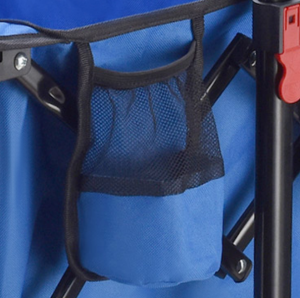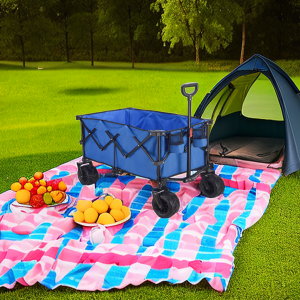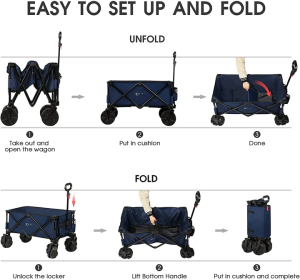More
Folding Wagons vs. Camping Folding Wagon Cart: Which is Your Gear’s Best Friend?
Folding Wagons vs. Camping Folding Wagon Cart: Which is Your Gear’s Best Friend?
When it comes to outdoor adventures, be it camping, picnicking, or a day at the beach, moving gear from point A to point B can be a bit of a logistical puzzle. This is where specialized transport solutions come into play. Two popular options for simplifying the process are folding wagons and traditional camping carts. In this article, we’ll conduct a head-to-head comparison of these two gear-hauling champions to help you decide which one is the right fit for your outdoor needs.

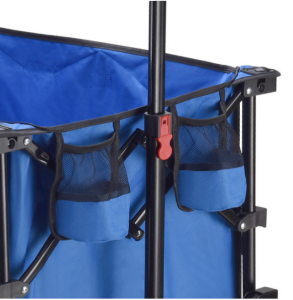

Folding Wagons:
-
Portability: Folding wagons are designed to be compact and easy to transport when not in use. They fold down to a fraction of their size, making them suitable for car camping, storage at home, or even bringing on road trips.
-
Ease of Use: One of the biggest advantages of folding wagons is their ease of use. They typically feature a collapsible design that allows for quick setup and folding, often with one hand. This makes them ideal for individuals or families with little ones.
-
Terrain Versatility: Folding wagons often come equipped with sturdy, all-terrain wheels that can handle a variety of surfaces, including sand, gravel, grass, and pavement. This versatility makes them suitable for a wide range of outdoor environments.
-
Capacity: Folding wagons typically have a higher load capacity compared to traditional camping carts. They can carry up to 150-300 pounds of gear, depending on the model, making them great for larger loads.
-
Versatility: Many folding wagons come with additional features such as built-in cup holders, pockets, and storage compartments. Some even have canopy attachments to provide shade on sunny days.
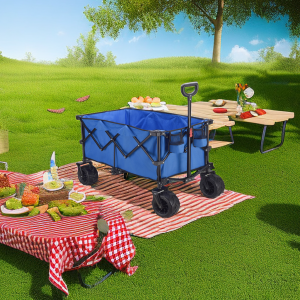
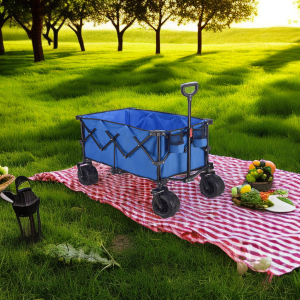
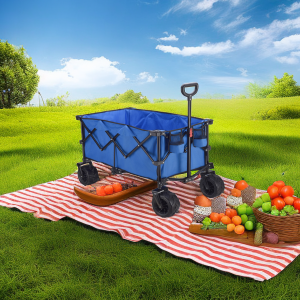
Camping Carts:
-
Sturdiness: Traditional camping carts, also known as hand-pulled carts, are often built with durability in mind. They are constructed with sturdy frames and reinforced wheels designed for rough terrain.
-
Specialized Designs: Camping carts may come in various designs, including flatbeds, carts with removable racks, and even carts designed specifically for hauling canoes or kayaks. This allows you to choose a cart tailored to your needs.
-
Weight Distribution: Camping carts are particularly useful for distributing the weight of your gear more evenly. They often feature multiple attachment points for securing gear and ensuring stability.
-
Wheel Size: Camping carts typically have larger wheels compared to folding wagons, which can provide better traction on rough trails or uneven terrain.
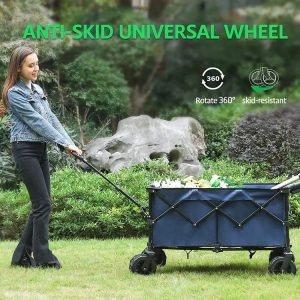
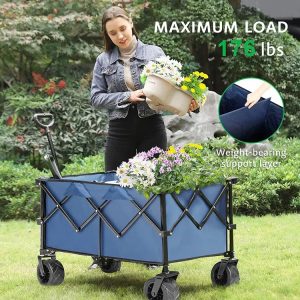
Factors to Consider When Choosing:
-
Terrain: Consider the types of environments you’ll be navigating. If you’re primarily camping in areas with smooth paths or pavement, a folding wagon might be more convenient. For rugged, off-road terrain, a camping cart with larger wheels might be a better choice.
-
Load Capacity: Think about the weight of your gear. Folding wagons can handle substantial loads, but if you have exceptionally heavy equipment, a camping cart might be a better fit.
-
Storage and Transport: Evaluate the space you have for storage and transport. Folding wagons are more compact when folded, making them easier to fit in a car or store at home.
-
Setup and Convenience: If you prioritize quick and easy setup, a folding wagon might be the better choice. Camping carts may require more assembly and are often bulkier.
Product link
Alibaba.com: Aicathlon Folding Wagons for Camping
Made in China: Aicathlon Folding Wagons for Camping
Other Camping Gear
Aicathlon Sleeping Bag Aicathlon Camping Tent Aicathlon Camping Tarp Aicathlon Camping Table&Chair
In conclusion, the choice between a folding wagon and a camping cart ultimately depends on your specific needs and preferences. Folding wagons offer convenience, ease of use, and portability, while camping carts provide durability, specialized designs, and the ability to distribute weight effectively. Consider the terrain you’ll encounter, the load you’ll be carrying, and your storage and transport options to determine which one will be your gear’s best friend on your outdoor adventures.


